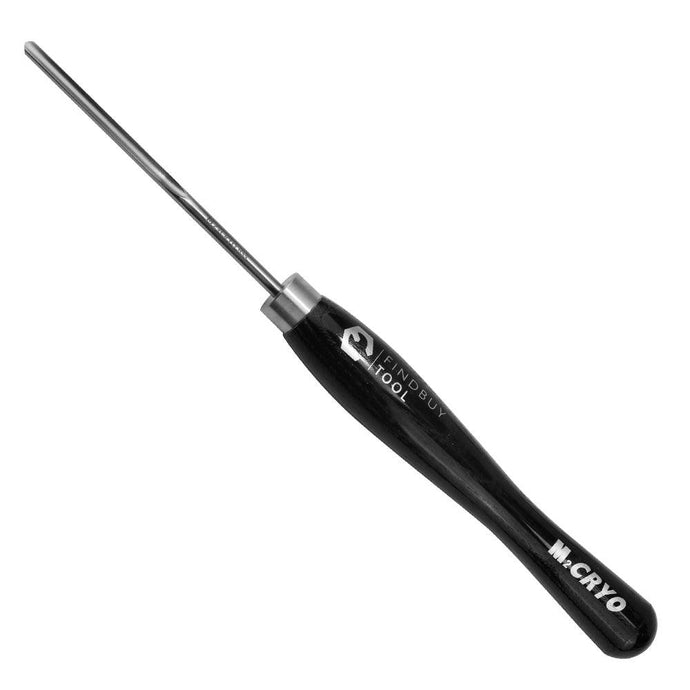Distinguishing Features: Understanding the Difference Between a Spindle Gouge and a Detail Gouge
In the realm of woodturning, selecting the right tool for the job can dramatically influence the outcome of a project. Among the most versatile tools in a woodturner's arsenal are the spindle gouge and the detail gouge. Although both tools are essential for achieving fine craftsmanship, they serve different purposes and have distinct characteristics that make them suitable for specific tasks. Understanding the differences between these two gouges can enhance a woodturner's skill set and improve the quality of their work.The spindle gouge is designed primarily for turning spindles, hence its name. It is particularly useful for creating long, cylindrical objects such as chair legs, table legs, and decorative spindles. The spindle gouge features a shallow, U-shaped flute and a rounded cutting edge, allowing it to make smooth, sweeping cuts along the length of the wood. This design is ideal for shaping curves, beads, and coves, making it an indispensable tool for detailed spindle work. The spindle gouge typically has a bevel angle between 35 to 45 degrees, providing the balance needed for both delicate cuts and more substantial shaping.
In contrast, the detail gouge is specifically designed for finer, more intricate work. It often features a more pronounced, V-shaped flute and a narrower cutting edge. This design allows for more precise cuts and enables the turner to create delicate details, such as intricate carvings or finely shaped features on small projects. The detail gouge is especially beneficial for tasks like adding decorative elements to projects, refining edges, or creating very shallow cuts in tight spaces. Due to its narrower profile, the detail gouge offers greater control when working on intricate details, making it the tool of choice for projects requiring precision and delicacy.
One of the main distinctions between the spindle gouge and the detail gouge lies in their intended applications. The spindle gouge is versatile and well-suited for a wide range of turning tasks, including roughing out shapes, creating contours, and forming beads. Its rounded cutting edge allows it to glide along the surface of the wood smoothly, making it perfect for long, flowing curves. Conversely, the detail gouge excels in producing sharp lines and fine details that require greater precision. It is ideal for embellishments, intricate designs, and finishing touches that demand an artist's touch.
Another critical difference between these tools is the way they handle wood grain. The spindle gouge is designed for spindle work, where the wood grain runs parallel to the lathe bed. This orientation allows for smooth, efficient cuts without the risk of tear-out or chipping. The spindle gouge's design allows it to work effectively with the grain, making it easier to achieve clean, controlled cuts. On the other hand, the detail gouge is more versatile when it comes to cutting across the grain or dealing with varying grain orientations. Its sharper cutting edge and design allow it to navigate changes in the wood grain, making it well-suited for detailed work where the grain may be more unpredictable.
While both tools share similarities in their overall purpose of shaping and detailing wood, their design features cater to different aspects of the turning process. The spindle gouge's robust design enables it to withstand the demands of general turning work, making it ideal for woodturners who need a tool that can handle a variety of tasks. In contrast, the detail gouge's finer profile is specifically tailored for those who require precision and detail in their work. This specialization makes the detail gouge an essential tool for artisans focused on achieving intricate designs and finishing touches.
The difference in cutting technique is another factor that sets these two tools apart. When using a spindle gouge, woodturners often employ a sliding motion along the surface of the wood, which allows the tool to create smooth, flowing curves. This technique is effective for larger shapes and broader cuts. In contrast, the detail gouge requires a more controlled, delicate touch. Woodturners typically use a pushing or pulling motion, carefully guiding the tool to achieve the desired effect. This technique demands a steady hand and a keen eye, as the detail gouge can easily create unwanted marks or uneven surfaces if not handled properly.
Choosing between a spindle gouge and a detail gouge ultimately depends on the specific project at hand and the woodturner's skill level. For those engaged in general spindle turning, the spindle gouge provides the versatility needed for a wide range of applications. It is a reliable tool for both beginners and seasoned turners alike. On the other hand, the detail gouge is ideal for those looking to take their craft to the next level by focusing on intricate details and precise cuts. Beginners may find the detail gouge a bit challenging to master initially, but with practice, it can significantly enhance their skill set and expand their creative possibilities.
In conclusion, both the spindle gouge and detail gouge are invaluable tools for woodturners, each serving distinct purposes in the turning process. The spindle gouge excels in creating smooth, flowing shapes and is versatile enough for various turning tasks, while the detail gouge shines in producing intricate designs and fine details. Understanding the differences between these two tools allows woodturners to select the right tool for each project, ultimately leading to better craftsmanship and more satisfying results. As woodturners develop their skills and refine their techniques, mastering both the spindle gouge and detail gouge will open up a world of creative possibilities in the art of woodturning.



